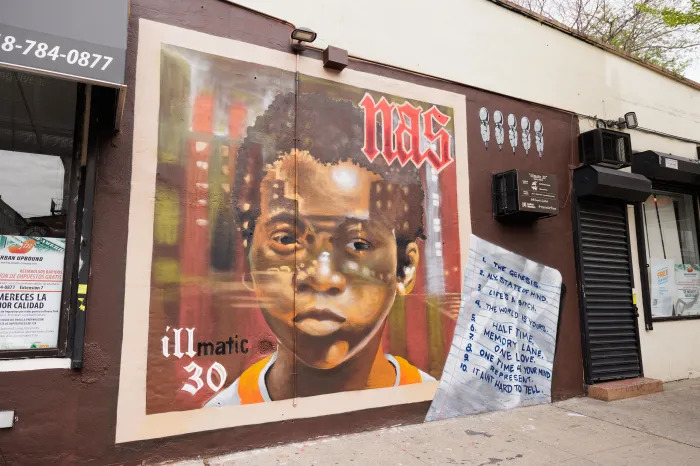BY ALEX DIBLASI
In what may be the most expensive art-house film ever made, “Cloud Atlas” brings together six seemingly disparate stories from six very different points in time, using every beat of its 160-minute running time to reveal and display their inherent similarities. A masterful collaboration between Lana and Andy Wachowski (the siblings who brought us “The Matrix” trilogy) and Tom Tykwer (director of the super-stylized “Run Lola Run”), each segment explores themes of oppression, fear, and escape, ultimately positing that freedom is the greatest goal of all, whatever the cost. Editor Alexander Berner deserves mention as well, as the intercutting of these six tales alternates throughout the film between the intellectual and the visceral.
The first segment takes place in 1849, with Jim Sturgess playing a young man on a sea voyage from East Asia back to the United States, ailing from a tropical fever and under the care of a kindly doctor played by Tom Hanks; Sturgess befriends an escaped slave stowaway (David Gyasi) who wishes to join the ship’s crew. Throughout, Sturgess keeps a journal of his travels, which play out like a seafaring film perfectly capturing that era, complete with a treasure chest full of gold coins.
In the second segment, taking place in 1936, Ben Whishaw is a young composer in a relationship with university student James D’Arcy, maintained long-distance through letters while Whishaw aids an elderly composer, played by Jim Broadbent. Matters take a turn for the worse when Whishaw’s Robert mistakes Broadbent praising the young composer’s Cloud Atlas Sextet, played on the piano, as being something more than kind words.
Halle Berry stars in the film’s third segment, playing a journalist investigating a conspiracy surrounding a corrupt nuclear power company in 1973 San Francisco. James D’Arcy reprises his character from the 1936 segment (albeit much older) as a whistleblower, while Hanks cameos as a scientist who confirms the truth. Berry and Hanks share an intimate conversation about what force has brought them together, feeling that their paths have previously crossed.
The fourth segment, easily the most humorous and heartwarming, features Broadbent as a down-on-his-luck book publisher who haplessly ends up in a retirement home against his will. Paced and written like a British farce, this present-day story showed the elderly engaged in a struggle for respect and dignity that is entirely in step with the rest of the film, despite its hilarity. Hanks has a delightful cameo as a thuggish ex-con, complete with cockney accent and a cauliflower ear, whose book is published by Broadbent’s character.
It is the fifth segment that seems the most like what audiences have come to expect from the Wachowskis, a stylized science-fiction tale set in mid-22nd century South Korea. In New Seoul (Old Seoul is mostly underwater – a subtle jab at global warming and rising sea levels), a human clone (played wonderfully by Doona Bae) lives a strict life of order and routine. Disobedience and rebellion is quickly punished with death. Jim Sturgess (made up to look Korean-American) liberates Bae and introduces her to an underground political movement that represents all resistance movements throughout civilized history. Arguably the longest segment, with high-concept chase sequences and a stunning allegory for consumerism near its very end, it also offers the most direct message into the core of the film, ruminating on how the past inspires the present which in turn influences the future, the oneness of civilization, and the inevitable victory of the oppressed over their oppressors.
The final segment offers no date other than being nearly a century after “the fall,” which sees a post-apocalyptic world where mankind lives a survivalist existence in the wild. Tom Hanks plays a family man constantly warding off a taunting demon after watching his friend get savagely murdered by a tribe of cannibals. Halle Berry, a technically advanced space explorer, arrives in need of help to reach the summit of a dangerous mountain. Suspicious of this outsider, Hanks finds himself seeking liberation not from slavery, blackmail, deception, abusive orderlies, or an oppressive society – all external factors that affected the protagonists of the other segments – but from his own fears, internal factors. It is the end of this segment that provides the film’s elegant coda.
Each segment presents different forms of struggle against morally unjust powers. The stories are masterfully interwoven, not just in concept but in imagery and even in actions; a knob turned in 1973 then cuts to a door opening in 2144. The varied tones of each segment keeps the viewer engaged – I generally get quite fidgety when any film not directed by Scorsese runs longer than two hours, and yet with “Cloud Atlas” my eyes were glued to the screen the entire time. “Cloud” Atlas combines a Proustian emphasis on memory with a cyclical perspective of life and death, society, and the universe itself that seem to come straight out of Hindu thought. The result is a stunningly epic film with a beautiful and optimistic message at its center.






























